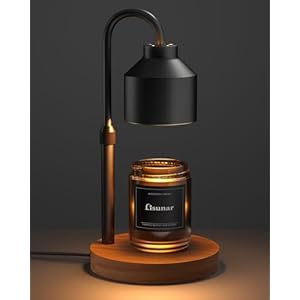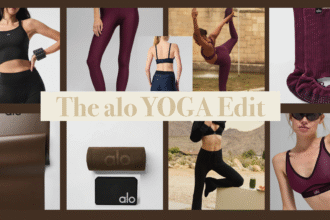Textile 101: Your Guide to Fabrics for Smart, Stylish Shopping
As a fashion designer with over two decades of hands-on experience in textile fabrication—from designing and merchandising to product development and sourcing—I’ve learned that truly timeless style starts with understanding your materials. Knowing your fabrics is the key to building a versatile, long-lasting wardrobe and essential for making choices that align with your lifestyle, comfort, and values.
Understanding textile fundamentals will transform how you shop, especially now when there is so much noise about sustainability. Let’s unravel the essentials.
The Two Families of Fabrics: Natural and Man-Made
Every textile falls under two categories: natural and man-made (synthetic) fibers. Each has unique properties, benefits, and best uses. Here’s what you need to know.
1. Natural Fibers: Timeless, Breathable, Biodegradable
Natural fibers are derived from plants or animals. They’re known for their breathability, comfort, and, in most cases, their biodegradability.
Cotton
- Source: The fluffy fibers surrounding the seeds of the cotton plant.
- Properties: Soft, breathable, highly absorbent, hypoallergenic, and gentle on the skin.
- Use: T-shirts, shirts, jeans, underwear, and bed linens.
- Sustainability: Biodegradable, but traditional farming can be resource-intensive. For a lower environmental footprint, look for organic or sustainably farmed cotton.
Linen
- Source: Stalks of the flax plant.
- Properties: Exceptionally cool, moisture-wicking, quick-drying, and naturally textured.
- Use: Summer dresses, blouses, trousers, suiting, home textiles.
- Sustainability: Very eco-friendly, requires minimal water and pesticides, fully biodegradable.
Silk
- Source: Produced by silkworms spinning their cocoons.
- Properties: Lightweight, strong, smooth, and naturally thermoregulating with a subtle luster.
- Use: Blouses, dresses, scarves, eveningwear, sleepwear.
- Sustainability: Biodegradable, but production can raise ethical concerns. Consider peace silk or certified sources.
Wool
- Source: The fleece of sheep also includes fibers like alpaca, mohair, and angora.
- Properties: Naturally insulating, moisture-wicking, odor-resistant, and breathable. Retains warmth even when damp.
- Use: Coats, blazers, sweaters, scarves, suiting, winter accessories.
- Sustainability: Renewable, biodegradable, and long-lasting. Choose mulesing-free or responsibly sourced wool.
Cashmere
- Source: The undercoat of cashmere goats.
- Properties: Exceptionally soft, lightweight, warm, and luxurious.
- Use: Sweaters, cardigans, scarves, and shawls.
- Sustainability: Biodegradable and long-lasting. Responsibly sourced cashmere supports better animal welfare.
Bamboo
- Source: Pulp of the fast-growing bamboo plant.
- Properties: Soft, moisture-wicking, naturally antibacterial, and breathable.
- Use: T-shirts, loungewear, socks, undergarments, bedding.
- Sustainability: Renewable and eco-friendly, but watch for chemical processing. Look for closed-loop or bamboo linen.
Hemp
- Source: Stalks of the hemp plant.
- Properties: Highly durable, breathable, antimicrobial, and resistant to mold and UV light.
- Use: T-shirts, jeans, bags, and sustainable basics.
- Sustainability: Very eco-friendly—grows quickly with minimal water, enriches soil, and is fully biodegradable.
2. Man-Made Fibers: Performance, Versatility, and Value
Man-made fibers, or synthetics, are produced through chemical processes, often from petroleum derivatives. They are designed to mimic or enhance the properties of natural fibers and offer added performance, affordability, and durability.
Polyester
- Source: Synthetic polymer derived from petroleum.
- Properties: Durable, wrinkle-resistant, fast-drying, colorfast, and can be engineered for softness or stretch.
- Use: Activewear, outerwear, dresses, suiting, and home textiles.
- Sustainability: Not biodegradable; persists in the environment for decades. Available in recycled forms.
Nylon
- Source: Synthetic polymer from petrochemicals.
- Properties: Strong, lightweight, elastic, abrasion-resistant, and smooth.
- Use: Swimwear, hosiery, lingerie, sportswear, windbreakers.
- Sustainability: Not biodegradable, but very durable. Recycled nylon options are increasing.
Other Common Synthetics
- Acrylic: Soft and warm, used as a wool substitute in sweaters and hats.
- Rayon/Viscose: Semi-synthetic, made from regenerated wood pulp. Drapes well and feels silky but can require delicate care.
Why Choose Synthetics? Performance, Price, and Practicality
Man-made fibers are sometimes misunderstood, but they’re essential for certain garment categories:
- Swimwear & Activewear: Synthetics like polyester and nylon repel water, resist shrinkage, and stretch—qualities that natural fibers like cotton cannot match for these uses.
- Weather-Resistant Outerwear: Synthetics are often windproof, water-repellent, and quick-drying.
- Affordable Basics: Polyester blends make everyday staples accessible and easier to care for (less ironing, greater durability).
Natural vs. Man-Made: When to Choose Which
Go Natural When:
- You want breathability and softness (t-shirts, summer dresses, undergarments)
- You prioritize biodegradability and lower microplastic pollution
- You’re seeking timeless, elevated essentials
Opt for Synthetics When:
- You need high-performance fabrics (workout gear, outerwear, swimwear)
- You want easy care, wrinkle resistance, and longevity.
- Price or accessibility is a primary concern.
Sustainability: The Real Impact
Sustainability in textiles is complex:
- Natural fibers (cotton, linen, silk, wool, cashmere, bamboo, hemp) are biodegradable and sustainable, but production methods matter. Organic and responsibly sourced options are best.
- Man-made fibers (polyester, nylon) are durable and can reduce overall consumption by lasting longer, but they are derived from non-renewable resources and contribute to microplastic pollution. Recycled versions are a step forward but not a complete solution.
Biodegradability: Cotton, linen, silk, wool, cashmere, bamboo, and hemp will break down in the environment. Polyester and nylon will not—they can persist for generations.
Longevity: Well-made synthetics can last for years without losing shape or color, reducing the need for frequent replacement. However, end-of-life disposal remains an environmental challenge.
So, based on this information, you pick your sustainable items.
How I Shop: My Personal Approach to Fabrics
My approach to shopping for fabrics is intentional and practical—a balance of comfort, quality, and longevity, always with an eye on personal style.
For t-shirts, I gravitate toward 100% cotton for breathability and comfort, though I sometimes opt for blends with a touch of polyester for added durability and easier care. Regarding jackets and coats, warmth is essential in a cold climate, so I look for pieces made of wool or wool blends—ideally with more than 70% wool content to ensure genuine insulation.
Blouses are a personal favorite. Silk is my top choice for its luxurious feel and elegant drape, but I’ll also invest in high-quality polyester blouses for longevity and low-maintenance appeal. My go-to for swimwear and athletic wear is always nylon-spandex blends, which provide the comfort, stretch, and performance needed for an active lifestyle.
I let style take the lead for dresses and skirts—sometimes it’s crisp cotton, other times breezy viscose or structured polyester. For me, the fabric must support the design, not vice versa.
The takeaway? Understanding your options empowers you to choose what works best for your lifestyle. Choose natural fibers for comfort, breathability, and classic style. Embrace man-made fibers for performance and longevity where they shine.
No fabric is inherently “good” or “bad”—each has its place. The key is to shop with intention: prioritize quality, consider sustainability, and invest in what fits your lifestyle.
Trending Products

SPACEKEEPER Adjustable Shelf Divider for Closet, 2 Pack Clear Purse Organizers for Closet Acrylic Handbag Separators Storage Organizer Bookshelf Separator Dividers in Bedroom, Office
Original price was: $69.99.$55.99Current price is: $55.99. Buy product
TOPIA HANGER Premium Wooden Hangers 30 Pack, Natural Wood Clothes Hangers, Durable Coat Hanger, 360° Swivel Hook, Non-Slip Shoulder Notches for Strap Dress, Shirt, Pant, Jacket-CT54N30
$34.99 Buy product
Vtopmart Drawer Dividers for Clothes 8 Pack, Adjustable 4″ High Expandable from 11.6″-17″ Dresser Drawer Organizer, Plastic Drawers Separators for Dresser, Baby Clothes, Kitchen and Office Storage
$29.99 Buy product
6 Pcs Underwear Drawer Organizer, Foldable Underwear Storage Divider Boxes 6/7/11 Cell Closet Clothing Organizers for Bras Panties Ties Socks Scarves Clothes
$18.99 Buy product
Electric Candle Warmer Lamp Black, Candle Lamp Warmer with Timer, Wax Warmer Lamp Candle Warmer for Jar Candles, Adjustable Height Candle Light Warmer with 2 Bulbs
Original price was: $39.99.$31.99Current price is: $31.99. Buy product
WISELIFE Reusable Grocery Bags [3 Pack],Large Grocery Tote Bag Water Resistant Shopping Bags Foldable Grocery Bag for Clothes,Shoes and Picnic
Original price was: $21.99.$17.99Current price is: $17.99. Buy product







